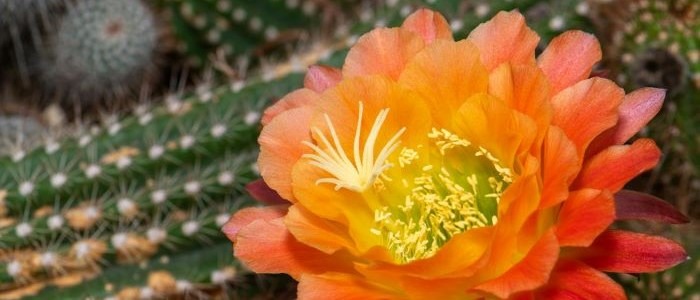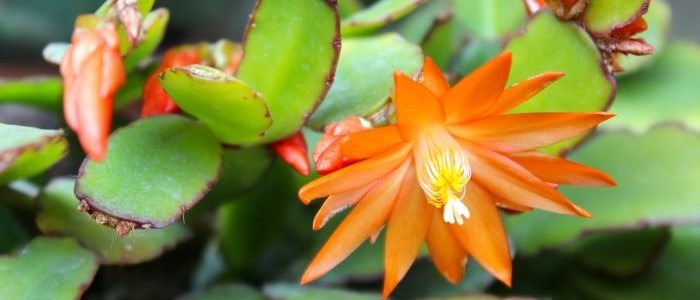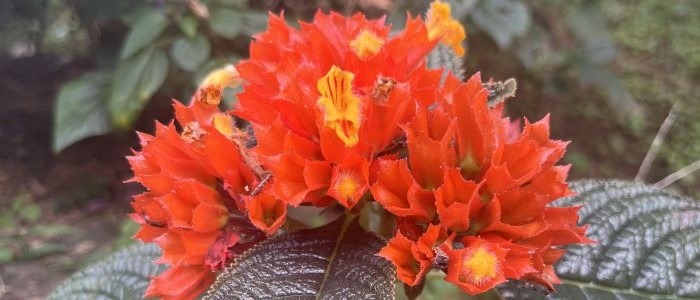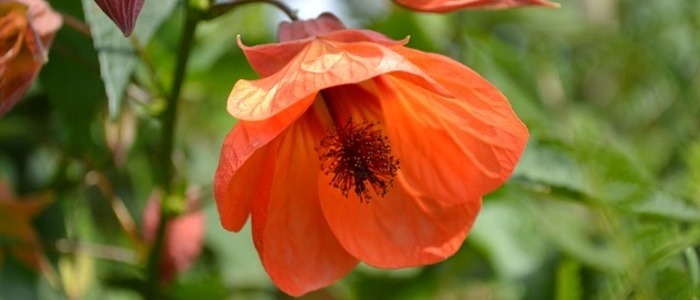When it comes to growing and caring for the orange gerbera daisy, selecting the right variety is an important step. With so many options available, it’s easy to get overwhelmed. But don’t worry – we’re here to help!
Researching different varieties of orange gerbera daisies is a great place to start. Popular varieties include the Peachy Orange, which has large, vibrant blooms that can reach up to 7 inches in diameter. Before you purchase any seeds or plants, make sure you choose one that will be best suited for your climate and growing conditions.
Once you’ve chosen a variety, you need to find a trusted nursery where you can purchase your seeds or plants from. It is also important to inspect them for signs of disease or pests before planting them in your garden. You don’t want any unwanted guests ruining your beautiful flowers!
Finally, when planting your gerbera daisies make sure they are receiving plenty of sunlight. They require 6-8 hours of direct sunlight each day in order to thrive and produce vibrant blooms throughout the year. If you live in a particularly shady area, consider using reflective mulch around the base of the plant or investing in grow lights that provide extra light without compromising on space or energy consumption.
By following these simple steps when selecting the right variety of orange gerbera daisy for your garden, you can ensure that your plants will be healthy and happy all season long!

The Orange Gerbera Daisy Frequently Asked Questions
What are the water requirements for Gerbera daisies?
Gerbera daisies have moderate water requirements. It is important to keep the soil consistently moist, but not waterlogged, to prevent root rot. Watering them deeply once or twice a week, depending on the weather conditions, is usually sufficient. It is important to avoid overhead watering as it can cause fungal diseases. Additionally, using a well-draining soil mix and mulching around the plants can help retain moisture and prevent water loss.
Is the Gerbera daisy a popular houseplant?
Yes, Gerbera daisies are popular houseplants mainly because of their vibrant and colorful blooms. Their long-lasting flowers and ability to thrive indoors make them a favorite choice among plant enthusiasts. With proper care and attention to their watering needs, Gerbera daisies can bring beauty and joy to any indoor space.
Planting and Positioning Orange Gerbera Daisy
Planting and positioning the orange gerbera daisy is essential for ensuring they thrive and produce beautiful blooms. When choosing a location, it’s important to make sure the area receives at least 6-8 hours of full sun each day. The soil should be well-draining and contain loam, sand, peat moss, and compost. Providing space between the plants will help with air circulation so that the roots can spread more easily, while also allowing you to keep an eye on them more closely.
Water your orange daisy regularly but be careful not to overwater it – too much water can cause root rot! As gerbera daisies are heavy feeders, fertilizing your flowers every two weeks with a balanced fertilizer will help promote healthy growth and vibrant blooms. When it comes time to transplant, choose a new pot that is one size larger than the current one as this will give your plant plenty of room for proper growth.
Finally, deadheading your orange gerbera daisies throughout the season helps promote further blooming and encourages healthier plants overall. Deadheading involves removing any withered or dying blossoms from the stem – simply snip them off just above where new buds form. This process redirects energy towards new buds instead of allowing energy to be wasted on producing seeds in spent blooms.
With the right knowledge and care, your orange gerbera daisy will bring beauty to your garden all season long!
Watering and Feeding Orange Gerbera Daisy
Caring for the orange gerbera daisy is crucial to keeping them in optimal health and creating a beautiful display. Frequent watering is important, with a deep soak once or twice per week being ideal. Hotter weather requires more frequent watering, but shorter periods of time. Feeding your daisies with flower-specific fertilizer every two weeks will also help keep them healthy and blooming brightly. Additionally, mulch around the base of the plant helps retain moisture and control weeds.
As long as you remember these tips for proper water and feeding habits, you can enjoy vibrant orange gerbera daisies in your garden for many years! Make sure to provide them with enough moisture without overwatering which can cause root rot; fertilize regularly; and add mulch near the base of the plants to retain moisture. With consistent care following these steps, you’ll be rewarded with beautiful blooms throughout their flowering season!
Propagating the Orange Gerbera Daisy
Propagating orange Gerbera daisies can be done in two ways: by dividing the clump or using seeds. When dividing the clumps, it is best to do so during early spring when the soil is still cool and moist. The clumps should be split with a sharp spade and replanted as soon as possible.
For those who choose to use seeds, the best time to do so is at the end of winter when temperatures are between 68-77 degrees Fahrenheit (20-25 degrees Celsius). The seeds should be planted in a mix of equal parts peat, vermiculite, and perlite, and kept moist but not wet. Germination should occur in 10-14 days and the seedlings should be transplanted when they are large enough to handle.
It is important to note that the gerbera daisy prefer warm climates with plenty of sun and well-drained soil. To ensure successful propagation, it is essential to provide adequate water, fertilizer, sunlight and ventilation for your plants. If you live in an area where there are cold winters, you may need to cover your plants with a frost blanket during winter months.
Another helpful tip for propagating orange gerbera daisies is pruning them regularly throughout their growing season. Pruning helps keep plants healthy by removing dead or dying flowers which promotes new growth and more blooms over time. Deadheading spent blooms also encourages reblooming later on in the season. Finally, if you have any pests or diseases affecting your gerbera daisy plants, act quickly as some issues can cause irreversible damage if left untreated for too long.
With proper care and knowledge anyone can enjoy beautiful orange gerbera daisies in their garden for many years to come!
Pruning and Deadheading Orange Gerbera Daisy
Pruning and deadheading are essential for healthy orange gerbera daisies. After the blooming season has ended, it is important to cut off any dead or damaged stems. Pruning should be done carefully, trimming back the stems to about 10–15 cm (4–6 inches) from the soil line. This will help promote new growth and encourage more flowers in the next blooming season.
Deadheading is also important, and should be done as soon as the flowers begin to fade or droop. It’s a good idea to check your plants regularly to ensure that all spent blooms have been removed. To ensure a clean and healthy cut, use sharp and clean scissors or secateurs when pruning and deadheading.
Proper pruning and deadheading can keep your orange gerbera daisy plants looking their best throughout the growing season. Doing so will help prevent diseases from spreading among plants, prevent overcrowding of stems, allow space for new buds to form, reduce powdery mildew risk, reduce pest infestations, enhance air circulation around plants, improve overall plant health – all of which lead to more vibrant flowers in your garden! With proper care, you can enjoy beautiful orange gerbera daisies in your garden for many years to come.
Orange Gerbera Daisy Common Pests and Problems
Orange gerbera daisy plants are relatively low-maintenance plants, but like any flower, they can still be affected by pests and diseases. To ensure your plants remain healthy and vibrant, it is important to be aware of the common pests and problems that may occur.
Mites are small, spider-like insects that feed on the sap of plants. They can cause yellowing and mottling of leaves or discoloration of flowers. Aphids are small pests that feed on sap and produce a sticky substance called honeydew which can attract ants or encourage sooty mold growth. Fungal diseases such as powdery mildew or rust can also affect gerbera daisies. Slugs and snails leave silvery trails over leaves, while birds may peck at buds or petals.
Fortunately, there are many ways to prevent or control these pests and diseases from affecting your orange gerbera daisies. Regularly inspect your plants for signs of infestation or disease. If you find any affected foliage, remove it immediately from the plant to prevent the spread of infection to other parts of the garden.
Minimize moisture in the area around your plants by providing good air circulation through pruning back overgrown stems, mulching around plants, watering only when necessary, and avoiding overhead watering if possible. Additionally, you can use organic insecticides such as neem oil to repel pests without harming beneficial insects in your garden.
With proper care and regular inspections, you can enjoy beautiful orange gerbera daisy plants in your garden for many years to come!
Conclusion
When it comes to growing and caring for orange gerbera daisy plants in your garden, knowledge is key. These beautiful flowers can bring a vibrant burst of color to any outdoor space, bringing plenty of joy along with it.
The first step is selecting the right variety for you; do some research and find a reliable nursery. It’s also important to make sure they receive 6-8 hours of direct sunlight each day—if this isn’t possible, try using reflective mulch or grow lights. Once planted, inspect regularly for signs of disease or pests so problems can be identified early on.
Water your orange gerbera daisies frequently with deep soakings once or twice a week and feed them flower-specific fertilizer every two weeks as well. Mulching around the base will help retain moisture and combat weeds. You may also want to consider propagating by dividing clumps or planting seeds if you want them around longer! Pruning spent blooms and deadheading are other great ways to prevent diseases from spreading, reduce powdery mildew risk, reduce pest infestations, enhance air circulation around plants, and improve overall plant health.
Be mindful when inspecting your plants for common pests such as mites, aphids, or fungal diseases; should you discover any issues, treat them with organic insecticides so as not to disturb the environment in your garden too much. Following these steps will ensure that anyone can enjoy their orange gerbera daisies year after year!
Other House Plants With Orange Flowers













